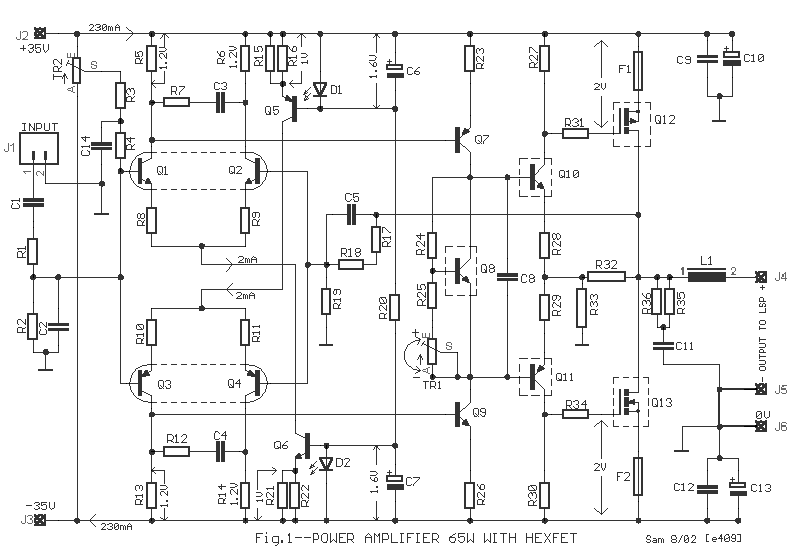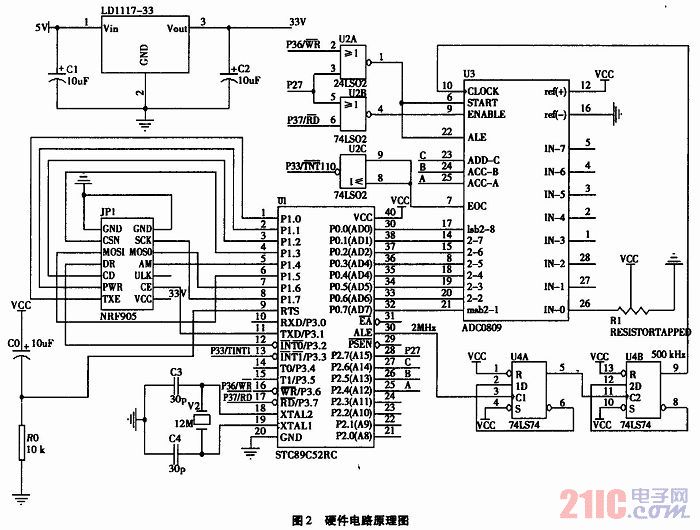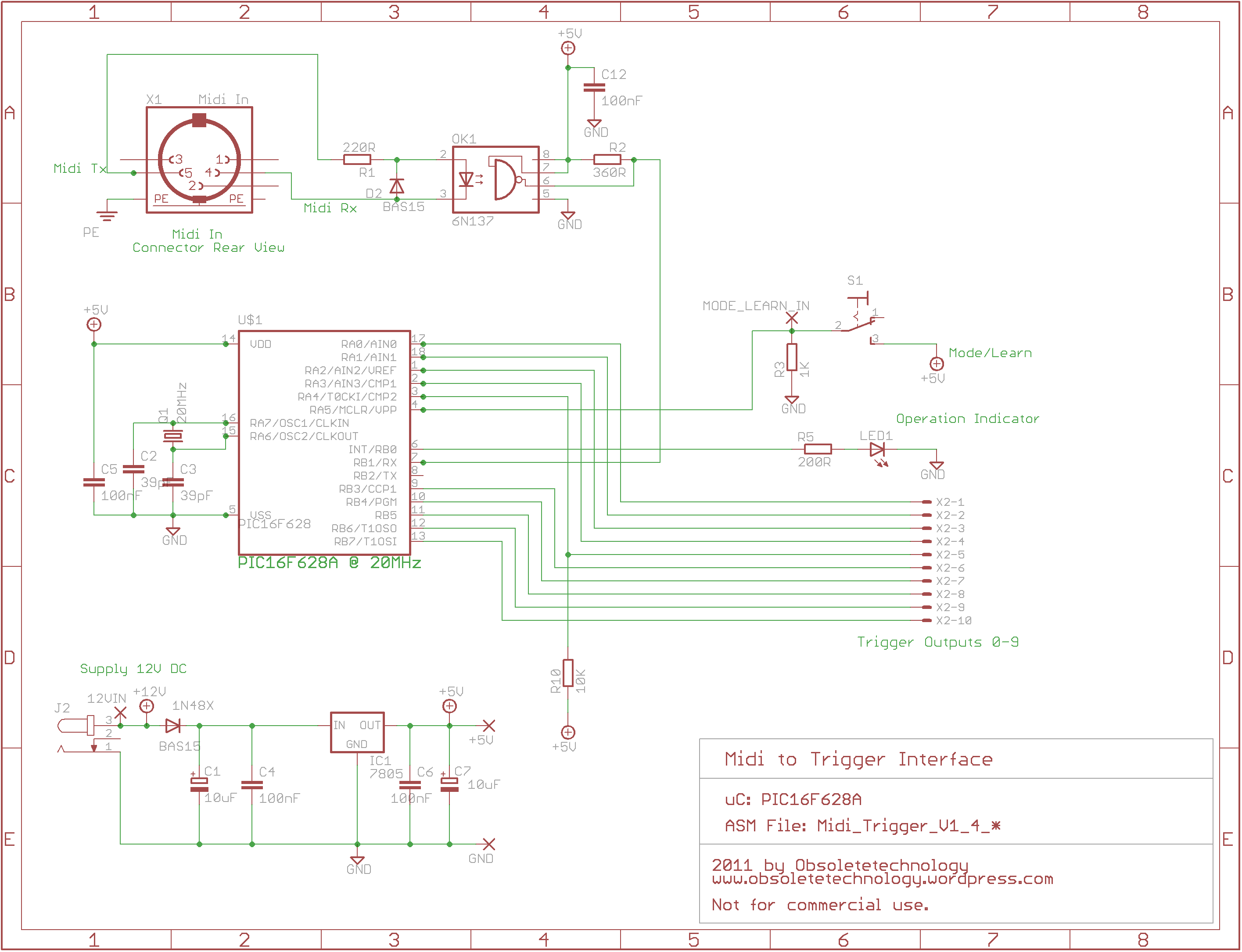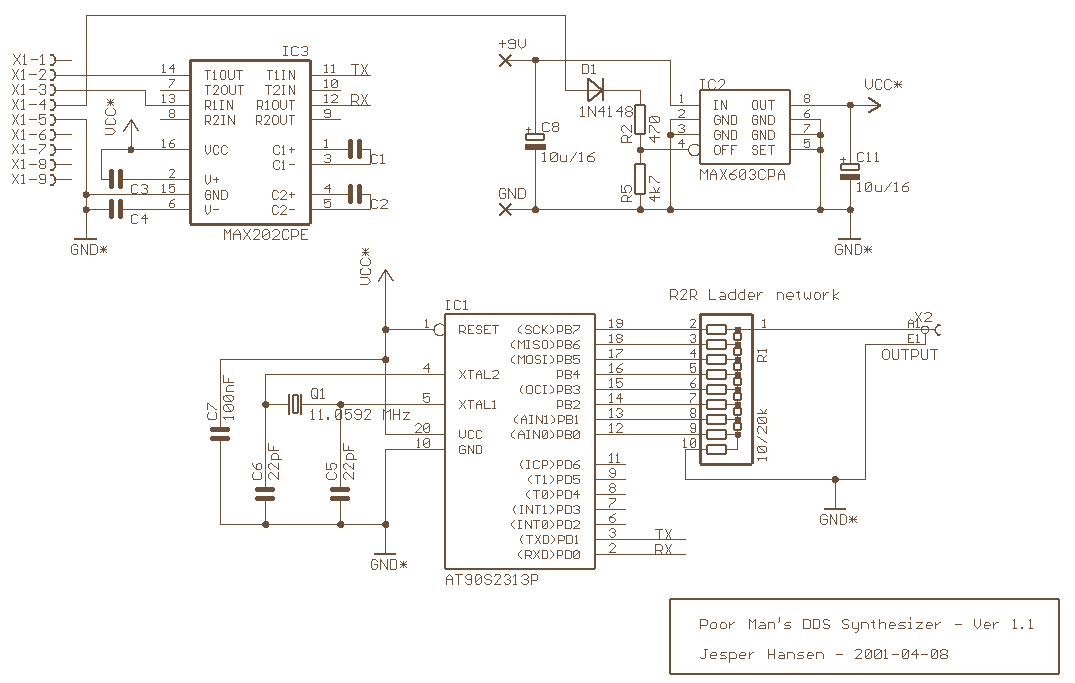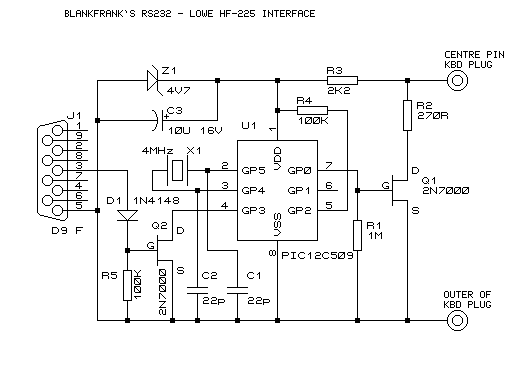
DK04 monitoring module with the computer communications interface circuits
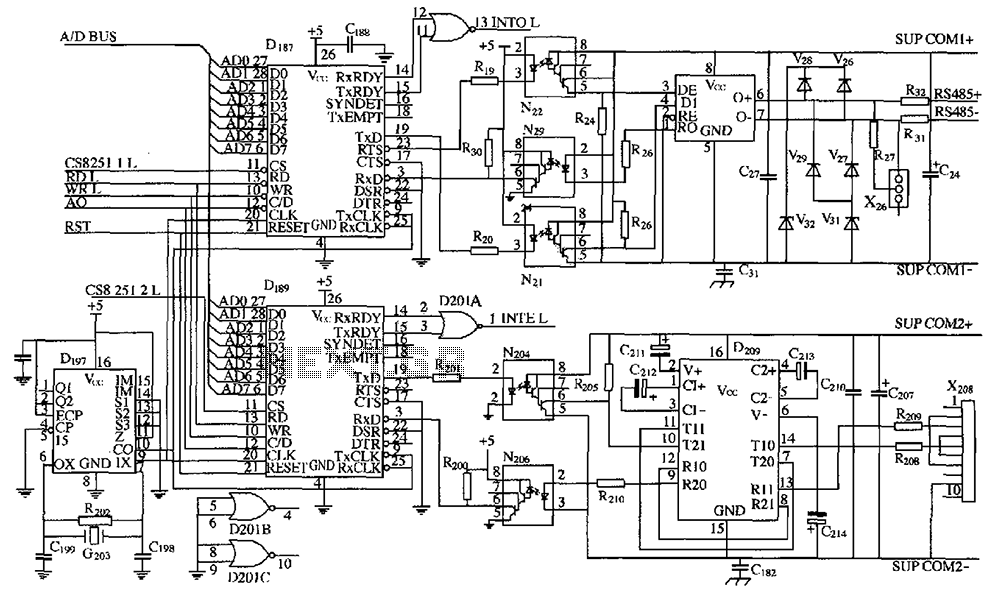
As shown in the figure, D187 is a universal asynchronous receiver-transmitter (UART). Its RX/TX signals are received through optocouplers N21, N22, and N29, facilitating RS-485 communication. The interface receiver/transmitter D28 and microprocessor D211 are completely optically isolated. D197 serves as a generator, currently set to a communication rate of 9600 bits per second. D189 is another universal asynchronous receiver-transmitter. Optocouplers N204 and N206 are used for the local RS-232 communication port, ensuring complete isolation from microprocessor D211. D209 is a single isolated 5V power supply that is converted into a dedicated RS-232 driver chip for 12V communication.
The circuit described utilizes a universal asynchronous receiver-transmitter (UART) for serial communication, which is essential in various electronic applications for data exchange. The primary UART, D187, interfaces with the RX/TX signals through a series of optocouplers (N21, N22, and N29), which are crucial for ensuring electrical isolation between different sections of the circuit, particularly when interfacing with RS-485 communication standards. This isolation helps protect sensitive components from voltage spikes and noise that may occur in the communication lines.
The receiver/transmitter D28, along with microprocessor D211, is designed to maintain complete optical isolation, enhancing the reliability of data transmission. This isolation is vital in environments where ground potential differences may exist, preventing ground loops that could lead to data corruption or damage to the microprocessor.
D197 functions as a communication rate generator, currently set at 9600 bits per second, which is a standard baud rate for many serial communication applications. This setting allows for efficient data transfer while balancing speed and reliability.
Another UART, D189, provides additional flexibility in communication options. The use of optocouplers N204 and N206 for the local RS-232 communication port further emphasizes the design's focus on isolation, ensuring that the microprocessor D211 remains unaffected by any disturbances on the RS-232 lines.
The power supply section includes D209, which is a single isolated 5V power supply. This component is critical for powering the RS-232 driver chip, which is configured to handle 12V communication. The conversion from 5V to 12V is essential for meeting the voltage requirements of the RS-232 protocol, allowing for robust and reliable communication between devices.
Overall, the design of this circuit prioritizes isolation, reliability, and adaptability, making it suitable for various applications that require secure and efficient serial communication. As shown in FIG, D187 is a universal asynchronous receiver transmitter (UART), its RX/TX signal received optocoupler N21, the N22 and N29, so put the RS-485 communication inter face receiver/transmitter D28 and microprocessor D211 is completely optically isolated up. D197 is a generator, currently set communication rate is 9600bit/s. D189 is another universal asynchronous receiver transmitter. Optocoupler N204 and N206 to the local RS-232 communication port and a microprocessor D211 completely isolated. D209 is a single isolated 5V power supply is converted into a dedicated RS-232 driver chip for l2V communication.
The circuit described utilizes a universal asynchronous receiver-transmitter (UART) for serial communication, which is essential in various electronic applications for data exchange. The primary UART, D187, interfaces with the RX/TX signals through a series of optocouplers (N21, N22, and N29), which are crucial for ensuring electrical isolation between different sections of the circuit, particularly when interfacing with RS-485 communication standards. This isolation helps protect sensitive components from voltage spikes and noise that may occur in the communication lines.
The receiver/transmitter D28, along with microprocessor D211, is designed to maintain complete optical isolation, enhancing the reliability of data transmission. This isolation is vital in environments where ground potential differences may exist, preventing ground loops that could lead to data corruption or damage to the microprocessor.
D197 functions as a communication rate generator, currently set at 9600 bits per second, which is a standard baud rate for many serial communication applications. This setting allows for efficient data transfer while balancing speed and reliability.
Another UART, D189, provides additional flexibility in communication options. The use of optocouplers N204 and N206 for the local RS-232 communication port further emphasizes the design's focus on isolation, ensuring that the microprocessor D211 remains unaffected by any disturbances on the RS-232 lines.
The power supply section includes D209, which is a single isolated 5V power supply. This component is critical for powering the RS-232 driver chip, which is configured to handle 12V communication. The conversion from 5V to 12V is essential for meeting the voltage requirements of the RS-232 protocol, allowing for robust and reliable communication between devices.
Overall, the design of this circuit prioritizes isolation, reliability, and adaptability, making it suitable for various applications that require secure and efficient serial communication. As shown in FIG, D187 is a universal asynchronous receiver transmitter (UART), its RX/TX signal received optocoupler N21, the N22 and N29, so put the RS-485 communication inter face receiver/transmitter D28 and microprocessor D211 is completely optically isolated up. D197 is a generator, currently set communication rate is 9600bit/s. D189 is another universal asynchronous receiver transmitter. Optocoupler N204 and N206 to the local RS-232 communication port and a microprocessor D211 completely isolated. D209 is a single isolated 5V power supply is converted into a dedicated RS-232 driver chip for l2V communication.
Warning: include(partials/cookie-banner.php): Failed to open stream: Permission denied in /var/www/html/nextgr/view-circuit.php on line 713
Warning: include(): Failed opening 'partials/cookie-banner.php' for inclusion (include_path='.:/usr/share/php') in /var/www/html/nextgr/view-circuit.php on line 713
